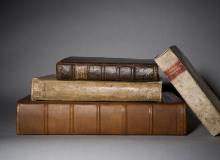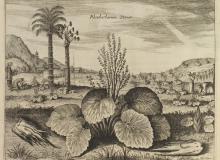London
Although separated from continental Europe by a stretch of water and a different language, London was still heavily involved in the circle of European intellectual conversation. British intellectuals, traders and pilgrims often made their way over to Europe, and this continued in the sixteenth century. Travel also occurred the other way, and part of this two-way exchange was the transfer of knowledge.
After the pioneering work of Gutenberg in the middle of the fifteenth century in Germany, printing rapidly spread throughout Europe. Cologne had a printing press around 1464, Rome in 1467, Bruges in 1474 and one was established in London around 1480. The founder of the printing trade in London was William Caxton, who had lived in Europe for years and learnt the printing trade during his years in Cologne in the early 1470s. He returned to England in the latter part of that decade and proceeded to publish works in English as well as export French language works to the continent.
Others quickly followed him, both those trained in Germany and others who learnt their trade in England, and they rapidly developed a thriving industry. Works that were published in Latin or in vernacular languages (be that Spanish, French and so on) were also quickly published in English. Once the British East India Company became active in the trade between Asia and the west, and with the rise of the dominance of the British Navy, even more traffic began to pass through London.
For instance, the Jesuit procurator Philippe Couplet and Shen Fuzong, a Chinese Christian convert, visited England in 1685, and the encyclopedia of Jean-Baptiste Du Halde (published in French in 1735) was serialized in English by a London-based printer between 1738 and 1741.


